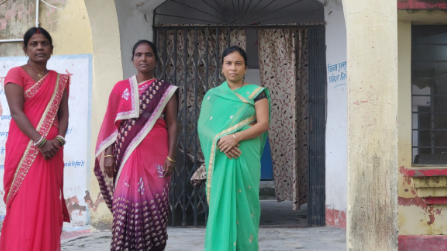

Bhubaneswar: Bhubaneswar, with its ancient temples and modern aspirations as an education and IT hub, presents a paradox for its female residents. The city that proudly showcases its cultural heritage and development trajectory is increasingly confronting an uncomfortable truth: the rising graph of crimes against women.
According to the National Crime Records Bureau (NCRB) data from its most recent Crime in India report (2022), Odisha registered 25,409 cases of crimes against women, marking a concerning 10.4% increase from the previous year. Bhubaneswar, as the state capital, accounts for a significant portion of these statistics.
"The numbers tell only part of the story," says Sagarika Mohanty, a women's rights activist who has been documenting cases in the city for over a decade. "For every reported case, at least three go unreported due to fear, shame, or lack of faith in the system."
The Bhubaneswar-Cuttack Police Commissionerate's annual crime statistics reveal that in 2023, the Twin City registered 704 cases of crimes against women. Of these:
Particularly alarming is the 16% increase in overall crimes against women compared to 2022 figures, when 607 such cases were registered in the commissionerate area.
While no area can be definitively labeled "safe" or "unsafe," certain locations in Bhubaneswar have reported higher incidents of gender-based crimes.
"Areas near educational institutions, particularly after hours, have become concerning hotspots," notes DCP Prateek Singh. "The stretches around Vani Vihar, KIIT Road, and certain parts of Chandrasekharpur have reported multiple incidents of harassment and stalking."
Public transportation remains another area of vulnerability. A 2023 survey conducted by the State Commission for Women found that 64% of female respondents in Bhubaneswar reported experiencing harassment in public transport or at transit points.
"I stopped taking evening classes at the coaching center near Master Canteen because the walk to the bus stop became increasingly threatening. Men would follow, pass comments, or slow down their vehicles. I complained once, but the police just said 'be careful and don't travel after dark.' Is that a solution?"
— Shreya M., 22, college student
The lived experiences often reflect gaps in security infrastructure. Poor street lighting, inadequate surveillance, and lack of police patrolling in many areas create environments where harassers operate with impunity.
"I work in the IT sector at Infocity and often have late shifts. The company provides a cab service, but the stretch from where the cab drops me to my PG accommodation is poorly lit. Several women in our building have faced harassment on that 300-meter stretch. Despite multiple complaints to the BMC, the lighting hasn't improved."
— Anushka D., 27, software engineer
The Bhubaneswar Police has implemented several initiatives to address women's safety concerns:
However, the Police Commissionerate's own data shows that the conviction rate in crimes against women stands at a dismal 28% as of 2023, raising questions about the efficacy of the justice delivery system.
"We have 42 women officers specifically trained to handle gender-based crimes across 20 police stations in Bhubaneswar," says Commissioner of Police Saumendra Priyadarshi. "Our average response time for emergency calls related to women's safety is down to 9 minutes in the city center and 15 minutes in peripheral areas."
Critics argue these measures remain insufficient given the scale of the problem.
Experts emphasize that addressing women's safety requires more than just law enforcement solutions.
Dr. Namita Mohanty, sociologist at Utkal University, points to deeper social issues: "The rising crime graph reflects a society in transition, where traditional values are eroding without adequate replacement by respect for women's autonomy and dignity. We need comprehensive educational interventions starting from school level."
The State Women's Commission has proposed a five-point action plan for Bhubaneswar:
Bhubaneswar stands at a critical juncture. As it aspires to join the ranks of India's most livable cities, the safety of half its population cannot remain compromised.
The statistics paint a concerning picture, but they also highlight the increasing willingness of women to report crimes—a testament to slowly building confidence in the system.
For the Temple City to truly honor its cultural heritage of respect and divinity, ensuring women can move freely without fear isn't just a matter of policing but a fundamental commitment the city must make to all its residents.
As activist Sagarika Mohanty puts it: "A truly smart city isn't measured by its infrastructure alone, but by how safely its most vulnerable citizens can navigate its spaces."